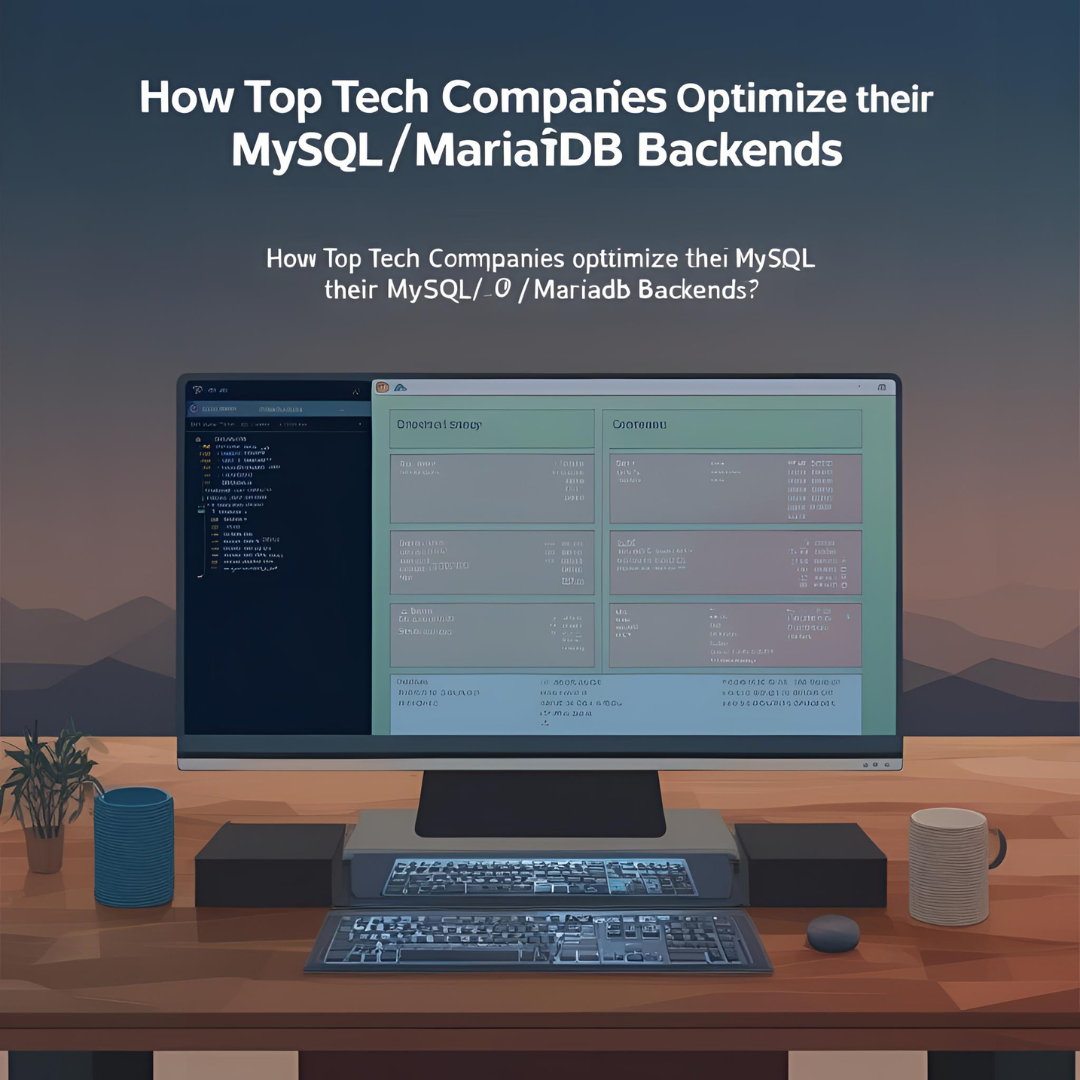In the competitive landscape of technology, database performance can make or break a company’s service quality. Tech giants like Facebook, Uber, Slack, and Shopify rely heavily on MySQL and MariaDB as core components of their infrastructure, despite the rise of NoSQL alternatives. Let’s explore the sophisticated strategies these companies employ to scale their relational databases to handle billions of queries per day.
Facebook’s MySQL Deployment: Scaling to Billions
Facebook maintains one of the largest MySQL deployments in the world, serving data to over 2.9 billion monthly active users. Their approach to optimization includes:
Logical Sharding at Massive Scale
Facebook implemented a proprietary sharding framework called “MyRocks” that:
- Horizontally partitions data across thousands of database servers
- Uses a consistent hashing algorithm to distribute data evenly
- Implements application-level sharding where data is divided by user ID
Custom Storage Engine
Facebook developed “RocksDB,” a storage engine optimized for:
- Flash storage performance characteristics
- Better compression ratios (2-3x better than InnoDB)
- Reduced write amplification, extending SSD lifespan
- Lower storage costs while maintaining query performance
Query Optimization and Monitoring
Facebook’s engineering team built sophisticated tools including:
- “Query Analyzer” for identifying problematic queries across their fleet
- Automated optimization suggestion systems
- Performance regression detection in their continuous deployment pipeline
Uber’s Schemaless: MySQL at Ridesharing Scale
Uber’s journey with MySQL showcases innovative approaches to handling geospatial data and real-time matching:
Hybrid Storage Architecture
Uber built “Schemaless,” a layer on top of MySQL that:
- Combines the reliability of MySQL with NoSQL flexibility
- Implements application-level sharding based on geographic regions
- Uses MySQL for persistent storage while adding caching layers for performance
Geospatial Indexing Optimizations
For their core business of matching drivers with riders:
- Custom geospatial indexing solutions built on MySQL
- Specialized partitioning strategies for location data
- Optimized query patterns for proximity searches
Resilience Engineering
Uber’s database reliability comes from:
- Sophisticated primary-replica failover mechanisms
- Cross-regional replication with minimal latency
- Chaos engineering practices to ensure robustness
Slack’s Journey to Database Performance
Slack’s growth from startup to enterprise communication platform required continuous MySQL optimization:
Query Performance Refinement
Slack’s database team focuses on:
- Comprehensive indexing strategies for their unique access patterns
- Replacing complex joins with denormalized data where appropriate
- Regular query plan analysis to catch performance regressions
Operational Excellence
Slack maintains reliability through:
- Automated schema changes using tools like GitHub’s “gh-ost”
- Advanced monitoring using Prometheus and custom instrumentation
- Benchmark-driven capacity planning
Custom Partitioning Strategies
To handle millions of workspaces:
- Time-based partitioning for message history
- Workspace-based sharding to isolate tenant data
- Intelligent caching layers to reduce database load
Shopify’s E-commerce Database Scaling
Powering over 1.7 million businesses requires exceptional database performance:
Multi-tenancy Architecture
Shopify’s database design includes:
- Sophisticated tenant isolation while maintaining a shared infrastructure
- Custom query routing based on merchant ID
- Performance isolation to prevent noisy neighbor problems
Replication Topology Optimization
For high availability and read scaling:
- Regional database clusters with multiple replicas
- Semi-synchronous replication for data consistency
- Read/write splitting via ProxySQL
Index and Schema Optimization
Shopify maintains performance through:
- Regular index usage analysis and optimization
- Schema design that balances normalization with query performance
- Automated identification of missing indexes
Common Optimization Strategies Across Tech Giants
Despite their differences, these companies share several approaches:
1. Custom Monitoring and Observability
All top tech companies invest heavily in:
- Real-time performance monitoring
- Automated alerting based on query performance
- Detailed metrics collection for capacity planning
- Query tracing across microservices
2. Connection Pooling Solutions
To handle high concurrency:
- ProxySQL for intelligent query routing
- Connection pooling to avoid overhead of creating new connections
- Connection limiting to prevent database overload
3. Caching Strategies
Reducing database load through:
- Multi-level caching (application, distributed cache, database)
- Intelligent cache invalidation strategies
- Write-through and read-aside caching patterns
4. Hardware Optimization
Physical infrastructure matters:
- NVMe SSD storage for performance-critical workloads
- High memory-to-storage ratios for buffer pool optimization
- Network infrastructure optimization to reduce latency
5. Configuration Tuning
Fine-tuning MySQL/MariaDB configuration:
- Buffer pool sizing appropriate to workload
- Thread pool configuration for optimal concurrency
- Transaction isolation level selection based on application needs
- Strategic innodb_flush_log_at_trx_commit settings balancing performance with durability
Lessons for Growing Companies
Organizations scaling their MySQL/MariaDB deployments can learn from these tech giants:
- Prioritize observability before optimization – You can’t improve what you don’t measure
- Invest in automation early – Manual database operations don’t scale
- Consider your specific workload characteristics – There’s no one-size-fits-all configuration
- Build incremental optimization processes – Continuous small improvements compound over time
- Don’t neglect the application layer – Sometimes the best database optimization happens in your code
Conclusion
The success of MySQL and MariaDB in these high-scale environments demonstrates that relational databases remain relevant even at massive scale. By combining thoughtful architecture, custom tooling, and operational excellence, these tech giants have proven that with the right approach, traditional relational databases can meet extraordinary performance demands.
While not every company needs Facebook-scale solutions, the principles these tech leaders apply can guide database optimization at any scale. As your business grows, remember that database performance is a journey rather than a destination—continuous monitoring, testing, and refinement are key to maintaining exceptional performance.


Leave a Reply